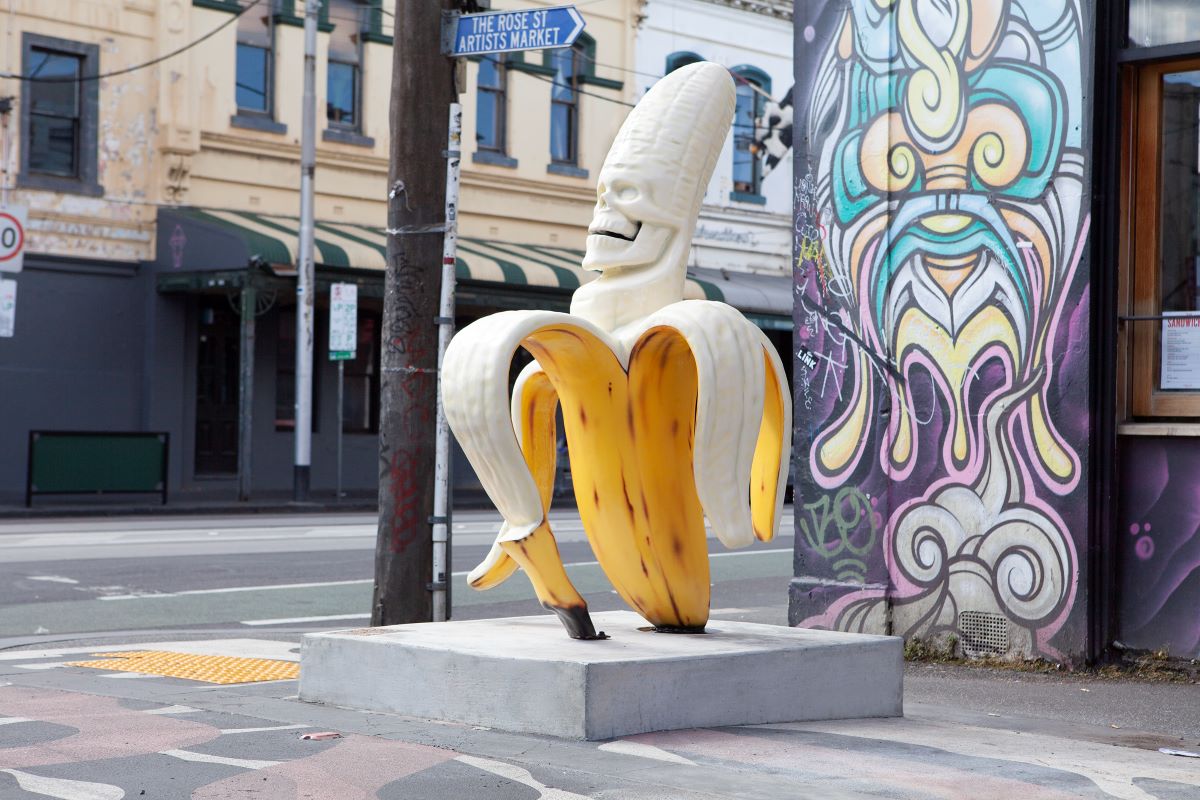
Image: Adam Stone ' Fallen Fruit' 2021. Photo: Adam Stone.
Fallen Fruit by Adam Stone uses iconography, symbolism and narrative to address a major theme in his practice, that permeates every aspect contemporary society─hubris.
The sculpture directly references the 1970s phenomenon of oversized, kitsch roadside objects - the big banana, pavlova, koala, submarine, merino - constructed to seduce travellers and passersby to stop for a photo opportunity and increase tourism and revenue in regional highway towns.
Fallen Fruit seeks to both engage with and subvert this tradition. The work does this by employing the symbol of the banana, anthropomorphised through the inclusion of a human skull, a memento mori to meditate on our Western tendencies towards unsustainable desires and excess. Using absurdity and humour as an entry point, this oversized pop object reveals the ‘infallibility’ of the super-human figure as social myth.
This work seeks to engage with the ancient tradition of public art serving as a medium to tell stories, communicate beliefs and provide warnings. In contrast in contemporary society, public statues are largely monumental and commemorative.
The sculpture also engages with Banana Art, a lowbrow internet subculture where practitioners work against the temporary nature of the material and document their efforts online. Here, the large sculpture, weighted by art history as well as its sheer physicality, stands in contrast to ephemeral banana carving. The work therefore acts as an absurd warning about our human compulsion towards an excessive drive (as in the myth of Icarus) that reinforces the danger of hubris. The final work is a simulacra pastiche of art-historical milieu with a post-internet nod.
By revisiting and subverting this tradition of oversized sculpture, the artist hopes that Fallen Fruit can become a welcome spectacle for tourists and locals as well as an invitation to reflect on our human tendencies towards unsustainable excess, a warning for the future.
